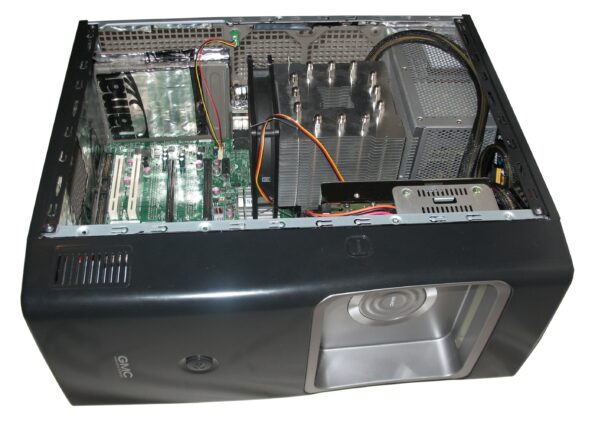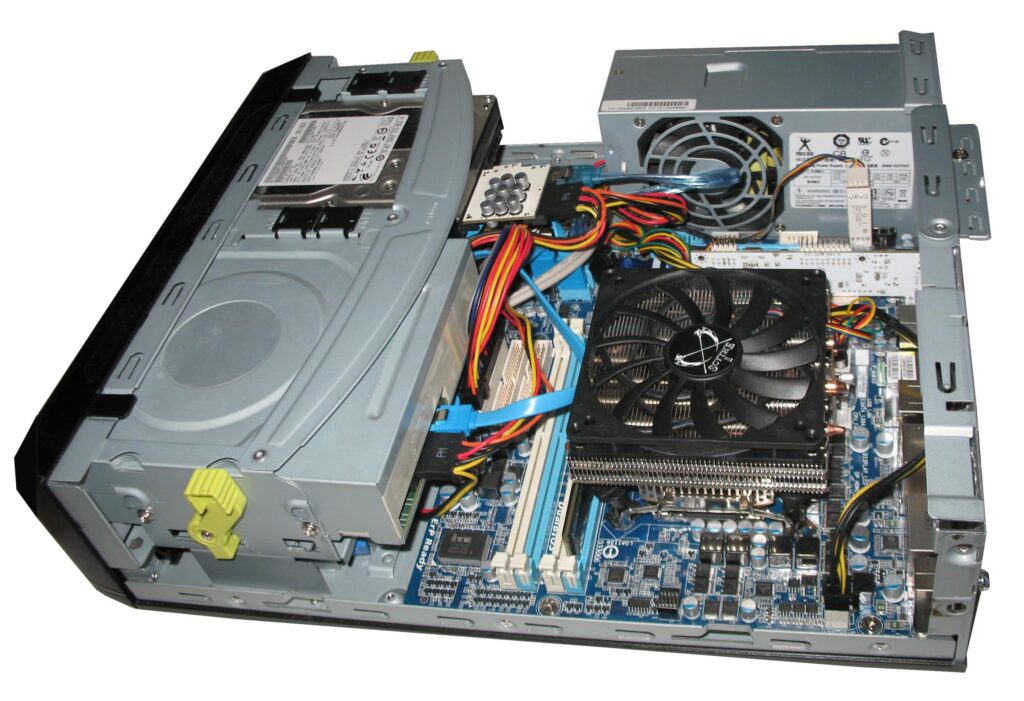I mentioned music servers in my post entitled “Jaguar Reference Systems – circa 2010”. Back in 2010 I was under the impression (from talk on the forums) that I’d be approaching the pinnacle of computer audio with my new Red Wine all-battery-power system (with DAC/Pre) and a laptop that could be unplugged to battery power, for a 100% off the grid system. The first thing I discovered was that unplugging my laptop from the adapter didn’t do much to improve my sound; some machines, like mine, have better grounding of the adapter than others and unplugging won’t have much benefit. The second thing I discovered was that digital/USB does not ensure perfect sound quality. Computer files aren’t guaranteed to transfer perfectly to your DAC, like moving a music file on your hard drive. Thus, the quality (and expense) of the USB cable can affect your sound, especially on high performance systems.
My third discovery came during a meeting at my audio club, The Pacific Northwest Audio Society. One of our members, Gary Koh (Owner of Genesis Loudspeakers), gave a presentation on his experiments with music servers and demonstrated how his modifications to the hardware, BIOS and operating system could have an impact on the sound. I didn’t know anything about assembling a computer back then, but from Gary’s presentation materials I was able to figure it out, to build the machine below.
This machine is the one I mostly use now. The hardware includes a high-quality / fanless power supply from SilverStone, an Intel Core 2 Duo processor, a Supermicro C2SEA motherboard, a solid state drive for the OS, a 2TB for the music library, external power to the heat sink fan and music library drive and a GMC case lined with Dynamat (for dampening) and sprayed with a nickel coating (to ground EMI/RFI). The machine is suspended under my coffee table and connects to our Plasma screen with an HDMI. I control it from the coffee table with an old fashioned wired mouse and keyboard, because I have all the USB drivers disabled.
Later on I ran across an online music server interest group called CMP2 Audio that brought a wealth of additional information, which I used to make further mods to the Windows OS and the hardware. There are two Windows OSs on this machine. The first one is a relatively normal installation I use to rip discs, download album art and watch Blu-ray movies. The second Windows installation is the audio OS; it doesn’t connect to the Internet, play video, allow iPad or iPhone connectivity or display high definition graphics. I believe in the CMP philosophy…that any activity on the machine which isn’t essential to playing the music file degrades sound quality. I know from experience that just disabling the Intel graphics driver and turning the screen resolution down to 8-bit (256 colors) can yield a slight, but noticeable improvement in the sound, which is why I cringe a little bit when I see a $5,000 server that will connect to the Internet or an iPad. This is certainly not the route of convenience, but where ultimate sound quality is the goal it’s the best approach in my opinion.
Eventually I was able to use what I had learned to develop my own approaches to building music servers with different variations such as the smaller unit pictured below. This machine uses a much smaller case with a micro-ATX motherboard. The fans and music drive are powered on the motherboard with power filtration devices between them (see the drive connector near the top left and the fan connector near the top right). The board uses an Intel i5 Sandy Bridge processor, with one of the two cores disabled and has much more control of the power setting functionality in the BIOS.
Our current server still uses the large case above and the same hardware, with an added ESI Juli@ sound card (the white card shown in the small machine). USB can produce a great sounding connection, but I suspect there are some inherent problems with jitter that are very difficult to eliminate; I’ve switched to a sound card, because I believe it’s more stable. The Juli@ card is separated into two halves so the analog circuit at the top of the card can be removed from the digital section on the bottom (if you use an external DAC). I have an I2S add-on card that plugs into the digital section of the Juli@, with an HDMI output; my Wyred 4 Sound DAC has an I2S input through HDMI, which I connect to the server with a PS Audio Silver HDMI cable. The result is quite good.
Stay tuned for the next evolutionary step, which I’m working on in the latter part of 2012.



